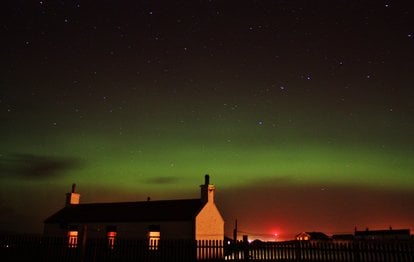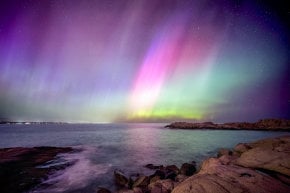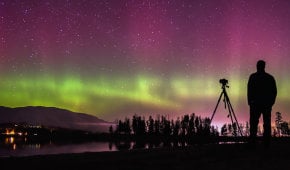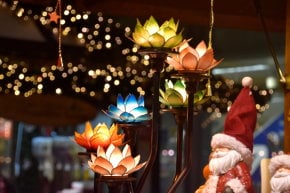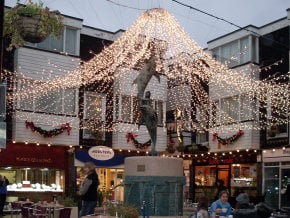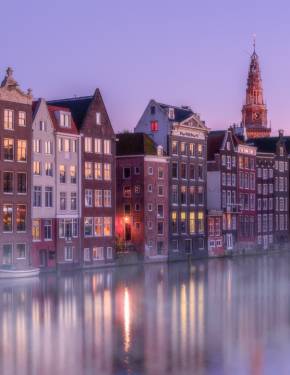Northern Lights in The United Kingdom 2025-2026
This incredible natural phenomenon can be seen even in Kent and Cornwall
Best time: late September–mid-March
One of the most incredible natural displays, northern lights, is typically associated with Scandinavia and Canada. However, if you get lucky, the lights can be seen throughout the north of the UK, like Northumberland and the Lake District. Scotland is where you have the biggest chances to see northern lights, especially the Scottish Highlands or Scottish Isles. Northern Wales and Northern Ireland are also good destinations for aurora chasers.
Best Time to See the Northern Lights
The most suitable period to look for the stunning northern lights in the UK is from late September to March. For higher chances to witness the lights on your visit, use the forecast and subscribe to the AuroraWatch UK alerts by Lancaster University.
The autumn equinox, which always happens in September, is considered to be a good time to witness the phenomenon due to geomagnetic and solar activity. December has the shortest days hence there are more hours of darkness than during the rest of the year. Spring equinox also increases the chances of seeing the aurora. In late March, however, these changes start to decrease dramatically. Light pollution and cloudiness are the main obstacles for aurora chasers in the UK.
Scotland
Thanks to the absence of light pollution and the fact that Northern Scotland lies at the same latitude as Nunivak Island, Alaska, or Stavanger, Norway, it is the perfect location to spot northern lights. Top spots include Shetland, Orkney, Outer Hebrides, as well as Caithness, Aberdeenshire, the Moray Coast, Rubna Hunish in Skye, and also far northwest observatories like Applecross, Lochinver, Cairngorms, Angus, the Fife Coast, Rannoch Moor, and Perthshire. Scotland also has the only UK's dark sky park—Galloway Forest Park.
In Edinburgh, spotting the northern lights is a rare but extraordinary experience. Although it's not common, the auroras can occasionally grace the Scottish capital with their presence. If you're exploring Edinburgh during the winter months, consider keeping an eye out for the northern lights. For the best chance of seeing them, head to elevated spots like Calton Hill, which offers a breathtaking view of the city, or try Blackford Hill and Arthur's Seat for other excellent vantage points.
Click here to find out even more about Northern Lights in Scotland.
England
Under some circumstances, it's also possible to enjoy the northern lights in England, particularly in Northumberland, The Lake District, Cornwall, and Oxfordshire. The Lake District is an excellent area to start with. Derwentwater, near Keswick, is one of the favorite locations for aurora borealis chasers since the local lake serves as a perfect backdrop for stunning pictures.
Northumberland boasts some of England's darkest skies due to its minimal light pollution, making it an ideal destination for stargazing. Recognized for its exceptionally clear night skies, Northumberland National Park and much of Kielder Water & Forest Park were designated as England's first International Dark Sky Park in 2013. On a clear night, stargazers can enjoy views of thousands of stars, the Milky Way, and even the Andromeda Galaxy with the naked eye. This location is also favored by Northern Lights enthusiasts for its excellent visibility of the aurora when you're fortunate enough to catch it. Popular stargazing spots also include Exmoor National Park in Devon and the Cornish coastline.
Wales
Anglesey is one of the top northern lights destinations in Wales. The island, located off the northwest Welsh coast in the Irish Sea, consists of Holy Island to the west and a few smaller islets. Anglesey is sometimes lucky to have aurora borealis in its skies, especially at times of autumn and spring equinoxes.
The Brecon Beacons is an excellent location for those seeking the Northern Lights. This National Park, characterized by its mountains, moorland, standing stones, castles, and lively waterfalls, offers a rich experience for both residents and visitors. Spanning approximately 42 miles, the park is named after the Central Beacons, which prominently feature south of Brecon. The highest peak in southern Britain, Pen y Fan, reaches 886 meters. The park's night skies are exceptional and have earned it the status of an International Dark Sky Reserve.
Northern Ireland
In Northern Ireland, the lights are best viewed from the Antrim coastline, which offers a clear view of the northern horizon over the Malin Sea. Some of the popular photography spots along the shore are Downhill Demesne on the North Coast and the ruins of Dunluce Castle, creating an excellent backdrop for the lights.
The Giant's Causeway, a UNESCO World Heritage Site, features a striking landscape of interlocking basalt columns created by ancient volcanic activity. Situated on Northern Ireland's northern coast, its remote setting ensures minimal light pollution, making it an excellent location for observing the Northern Lights.
Sperrin Mountains is another popular spot that gives some advantages due to elevation. This is one of the largest upland areas in Northern Ireland. Lough Fea Lake, nestled in the mountains, looks stunning with the reflection of northern lights. On the southeast edge of the Sperrin Range, there is one more exceptionally scenic spot: Beaghmore stone circles, located just 8.5 mi (13 km) northwest of Cookstown in Tyrone County.
London
In London, spotting the Northern Lights is highly unlikely due to light pollution and the city's geographical location. However, with the recent increase in geomagnetic storm activity, there is a slim chance that the aurora borealis might become visible in areas farther from the poles. To maximize the chance of seeing the Northern Lights, seek out locations with minimal light pollution, such as Hampstead Heath and Primrose Hill.
Hampstead, located on one of London's highest points, is a prime spot for stargazing due to its expansive park and elevated position. It also hosts the Hampstead Observatory, which welcomes the public every Friday and Saturday night (weather permitting) from mid-September to mid-April.
Primrose Hill, a favored viewpoint in London, offers a high vantage point above the city. Its location within a large park helps reduce light pollution, making it a good spot for stargazing. The elevation and reduced light interference also make it an excellent location to observe stars and meteor showers, especially prominent in August.

